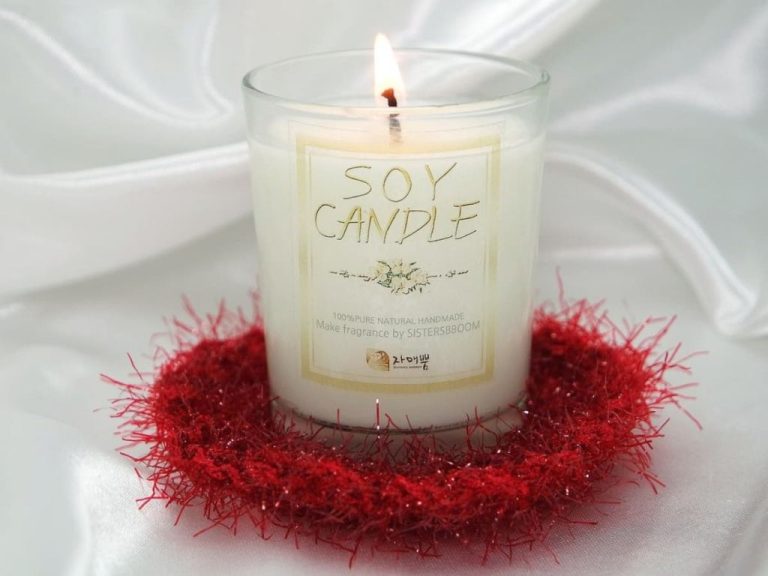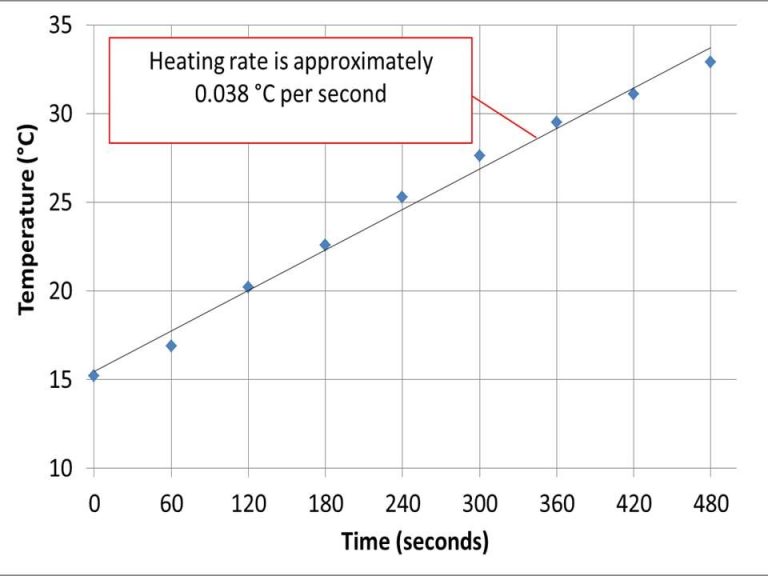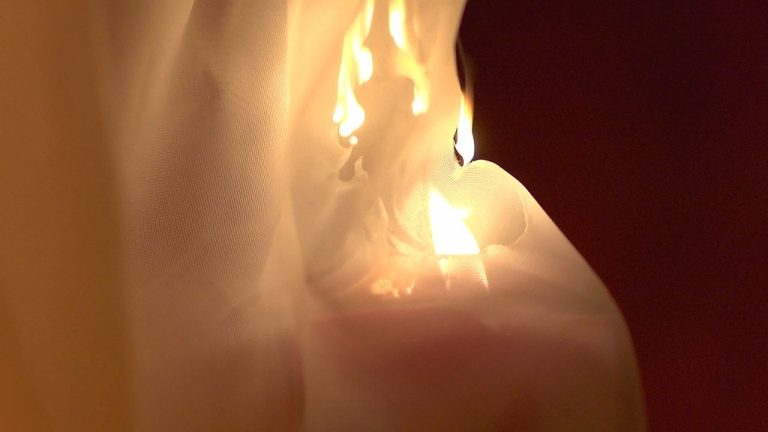Do Tea Candles Burn Out On Their Own?
What Are Tea Candles?
Tea candles are small wax candles in containers, typically used for decoration or lighting. According to The Free Dictionary, tea candles are “small candles in thin metal or glass containers designed to burn for a relatively short time.”
Tea candles come in a variety of common sizes and shapes. The containers are usually made of aluminum or glass, and can be round, square, oval, rectangular, or other shapes. Some of the most popular sizes are 4cm diameter x 3cm tall and 3cm diameter x 4cm tall. The wax within the containers also comes in different shapes like a rounded top, a peaked top, or a flat top.
Tea candles are traditionally made from paraffin wax, a petroleum byproduct. However, some modern tea candles use vegetable-based waxes like soy wax or beeswax, which burn cleaner. The wicks are typically cotton string.
How Do Tea Candles Work?
Tea candles work through a simple but clever design involving the wick and wax composition. The wick in a tea candle is made from tightly braided cotton that has been stiffened and straightened. This allows the wick to stand upright while also providing maximum capillary action to draw the liquefied wax up to the flame. The wax used in tea candles has a low melting point, frequently made from paraffin wax or a paraffin blend. This allows the wax to liquefy into a pool while the candle burns.
The relationship between the wick and wax is important for a properly burning tea candle. The wick must be stiff enough to stand upright when first lit, but also be able to bend and reposition itself in the melted wax pool as it burns. The wax itself must fully liquefy to supply fuel to the wick through capillary action. If the wick is improperly made or the wax does not melt sufficiently, the candle will tunnel or form a cavity of unmelted wax around the wick. A good tea candle design ensures the wick and wax work in tandem to maximize burn time.
In summary, the specialized wick allows melted wax to be drawn up while remaining upright in the melted wax pool. The wax liquefies completely to fuel the flame. This relationship between wick and wax composition is what makes tea candles effective and allows them to safely burn until they fully extinguish on their own.[1]
[1] https://en.wikipedia.org/wiki/Tealight
Do Tea Candles Burn Out on Their Own?
Yes, tea candles will eventually burn out on their own. There are a few key factors that cause a tea candle to stop burning:
Wick Length – Tea candles have very short wicks, usually around 1/4 inch long. As the candle burns down, the wick gets shorter and shorter until it can no longer draw up enough wax to sustain the flame.
Wax Pool – Tea candles have small wax pools, around 1 inch in diameter. Once the wax pool burns down, there is not enough melted wax for the wick to soak up and continue burning.
Oxygen Supply – Tea candles burn in small, enclosed containers. This restricts airflow and limits the oxygen supply to the flame. Without enough oxygen, the flame will be snuffed out.(1)
For these reasons, tea candles will safely burn out on their own after a few hours, once the wax and wick are fully consumed. It’s not recommended to leave any open flame unattended, but tea candles are designed to stop burning on their own.
Factors That Affect Burn Time
Tea candles come in a range of sizes and shapes, all of which can impact their total burn time. Here are some of the key factors that determine how long a tea candle will burn:
Wick Length/Width – The wick is the cord inside the candle that ignites and sustains the flame. Wicks that are longer and wider absorb more wax and provide a larger flame, burning the candle faster. Shorter, thinner wicks restrict the fuel supply and produce a smaller flame, extending burn time.
Wax Composition – Tea candles are typically made from paraffin wax, a byproduct of petroleum refining. Some are made from beeswax or soy wax, which have different melting points and viscosity. Denser waxes with higher melting points tend to burn slower.[1]
Candle Diameter/Size – Larger diameter tea candles provide more overall wax volume to fuel the flame. Giant tea candles over 3 inches wide may burn up to 10 hours, while smaller 1-inch candles only burn 3-4 hours.[2]
Airflow Around Candle – More airflow exposure increases melt rate by cooling the wax and strengthening the flame. Tea candles in open holders or exposed areas will burn faster than those in enclosed spaces with less airflow.[1]
Safety Concerns
Tea candles can pose fire hazards if not used properly. It’s important to keep the following safety tips in mind when burning tea candles:
Risk of fire if left unattended
Never leave a burning tea candle unattended. The wax can melt and spill over, igniting flammable surfaces. Tea candles should always be placed in a heat-safe holder on a nonflammable surface. Don’t place tea candles near drapes, bedding or furniture that could catch fire.

Proper handling and placement
Always keep burning tea candles out of reach of children and pets. Don’t move a burning tea candle once lit. Make sure to extinguish tea candles before leaving a room or going to sleep. Only burn tea candles on stable, flat surfaces away from drafts. Don’t burn tea candles close together – leave at least 4 inches between each one.
Average Burn Times
The average burn time for a tea candle can vary substantially depending on the size and container of the candle. Smaller tea candles in metal tins generally burn for 1-3 hours. Larger tea candles in glass containers can burn for up to 6-8 hours.
Small tea candles in metal tins burn faster because the metal conducts heat and the wax pool is smaller. The metal also contains the heat rather than allowing it to dissipate. Larger candles in glass containers burn slower because the glass insulates the candle and allows more heat to escape, while the larger wax pool sustains the flame longer.
Enclosed tea candles in containers tend to burn longer than unenclosed candles. The container traps heat and allows the candle to burn more efficiently. Unenclosed candles that are open to air burn faster as the heat dissipates more quickly.
According to Northern Lights Candles (source), their 6 hour long-burning tea candles in metal tins average approximately 6 hours of burn time. GoodLight Candles (source) states their tea lights in metal tins will burn for 2-4 hours on average.
Extending Burn Time
There are a few simple tricks you can use to extend the burn time of tea candles and help them last longer:
Trimming the wick – Long wicks tend to burn faster, so it’s best to trim the wick to 1⁄4 inch before lighting to help the candle burn slower and more evenly. Use nail clippers or scissors to neatly trim the wick.
Using a proper holder – Make sure to place the tea candle in a holder that fits it properly. The holder should keep the candle upright and prevent too much wax from pooling around the edge. This helps regulate the melt pool and extend burn time.
Covering from drafts – Shield the candle from drafts which can cause it to burn unevenly or too quickly. Place the candle in a location protected from vents, fans, open windows and doors. Glass votive holders also help block drafts.
With just these simple tricks, you can squeeze out the maximum burn time from tea candles so you can enjoy their glow as long as possible.
Specialty Tea Candles
Beyond standard white tea candles, there are many specialty varieties available. Scented tea candles come in fragrances like lavender, vanilla, apple cinnamon, and more. The scents are added to the wax to provide a pleasant aroma as the candle burns. Colored tea candles also offer variety, coming in shades of red, blue, yellow, green, and more. The dye is mixed into the wax. Shaped tea candles can be found in fun forms like hearts, stars, and flowers. These are poured into custom molds before being set. Floating tea candles have a metal disc embedded into the bottom, allowing them to float in water. These are popular for centerpieces and ambiance. Some companies also make tea candles designed specifically for events like birthdays and holidays. These often have decorative emblems, messages, or holiday symbols imprinted on them.
Overall, specialty tea candles allow for creativity and personalization when used for gifts, parties, aromatherapy, or just everyday use. Scented and colored tea lights in particular remain popular for the added sensory experience they provide. Custom shapes and designs also help tea candles stand out as decorative accents. While more variety exists, most specialty tea candles burn and are used in the same standard way. They ultimately provide a unique take on a classic candle type.
Tea Candle Uses
Tea candles have many uses beyond just lighting. Their small size and portability make them convenient for both indoor and outdoor use. Here are some of the most popular ways to use tea candles:
Ambiance – The soft, flickering glow of a tea candle creates a warm, cozy ambiance. Tea candles are an easy way to set the mood for a romantic dinner or a relaxing bath. Their subtle lighting is ideal for bedrooms, living rooms, and other areas where bright lighting might be disruptive. For maximum impact, group several tealights together in glass votives or other candle holders.
Heat source – The heat produced by a burning tea candle can be used for several purposes. Place a tealight under a ceramic plant pot to provide warmth for seed starting. Position tea candles around pipes to prevent freezing in winter. Use a tea candle to slightly warm lotions or massage oils before use.
Ritual – Lighting a candle often plays a role in celebrations, memorials, or spiritual rituals. Their small size makes tea candles convenient to use in group rituals or vigils requiring many flames. Carry a tea light in a heat-safe container to light at significant moments or locations during a ceremony.
Decoration – Tea candles add flair and interest to centerpieces, holiday decor, and tablescapes. Float multiple tealights in glass bowls or vases for parties. Line walkways or driveways with tea lights in paper bags to create a magical ambiance. Nestle tealights into carved pumpkins for a sophisticated Halloween look.
With their versatility, simplicity, and inexpensive cost, tea candles are a multipurpose lighting tool for indoor and outdoor use. Keep a supply on hand for instant ambiance whenever the mood strikes.
History of Tea Candles
The exact origins of tea candles are unknown, but they have been used for centuries in various forms. According to Wikipedia, small candles in containers were used as far back as the Middle Ages in Europe to provide candlelight without risking a fire. These early “tealights” were made of tallow and placed in small metal cups.
Tea candles grew in popularity in Britain during the Victorian era when they were used to light teapots and keep tea warm during afternoon tea parties. The name “tealight” comes from this Victorian tradition of using small candles to keep teapots heated. According to Pyramid Glass, tealights became especially popular after electricity came to British homes, allowing for safer use of small open flames.
Modern tealights as we know them emerged in the latter half of the 20th century. Paraffin wax replaced tallow as the candle wax, and metals cups were replaced with heat-resistant glass containers. This allowed the tealight to fully liquefy while burning. The size and shape also became standardized. According to Candlemaking Help, tealights remain popular worldwide today for decorative lighting, aroma, and warming purposes.



